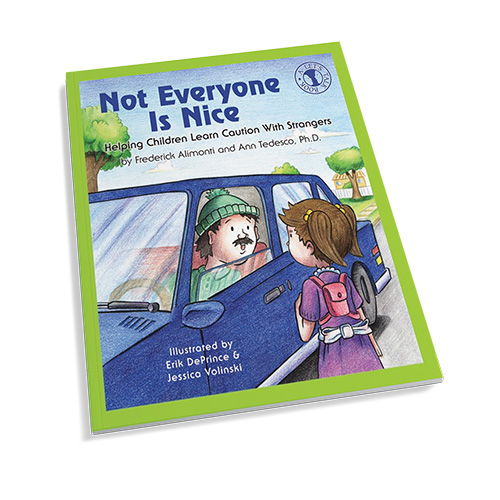
Whether you’re a parent-to-be or mom or dad to a newborn or even a teenager, you’ll likely agree that raising children is no easy task.
There’s a reason for that “it takes a village” phrase. Well, this article aims to lighten your parental load. From what chores are okay to assign to your youngster to just what information to leave with the babysitter, these tips will serve you well.
Unfortunately, parents of youth in the Berks County area are all too familiar with this very real situation, as child abduction attempts ran rampant this year. To that end, parents should have age-appropriate safety talks with their kids and let them know these 3 Nevers and 2 Always instances:
Stranger Danger
1. Never
Go anywhere with anyone you don’t know or trust. Stay away from strangers’ vehicles.
2. Never
Take anything from a stranger – not even if they are in possession of something that belongs to you and you have the urge to get it back.
3. Never
Talk to a stranger – even if he or she knows your or your parents’ names. It’s okay to not make eye contact, to walk – or even run – away.
4. Always
Practice safety in numbers when possible. Stay in a group or with friends.
5. Always
Listen and do not go where you are not allowed. Make sure someone knows where you are going to be at all times, as well as when you’re expected to be back.

Practicing Cyber Safety
Parents must also be aware of their child’s safety in today’s digital age. Unfortunately, child predators online may be even more common than out in the “real” world. Make sure you know about these 4 apps (as compiled by blogger Megan Maas on bonbonbreak.com):

Tinder.
It’s used for dating and hook-ups. Unfortunately, that makes it easy for adults to track down children who shouldn’t be using the app. It’s also a place where groups of kids can easily gang up on others and cyberbully them.

Poof.
Poof gives the illusion that other phone apps have “disappeared.” Children can use Poof to hide apps they want to use yet don’t want others to see they have on their devices. The good news: it’s no longer available for purchase. The bad news: if it was already downloaded, it’s still usable. And there are similar apps being created all the time. Some to look for include: Hidden Apps, App Lock and Hide It Pro.

Snapchat.
Did you know Snapchat is the #1 app used for sexting? Users think they can send photos to friends and connections and put an expiration on those images, but in reality, the user can take a screen shot and then use those images for whatever purpose he or she desires. Young users are often fooled by a false sense of security with this one.

Kik Messenger.
Memes, videos, pictures: more than 100 million Kik users can share it all via the messaging app. Unfortunately, youth are starting to use Kik as a means for sexting each other, deeming people “Kik buddies.” There are no parental controls on Kik, and users cannot be authenticated, which makes it easy for sexual predators to contact minors.
It’s scary, but here are some stats that are a wake-up call of sorts when it comes to youth and social media. Did you know that by the time children reach their teenage years, of those using social media:
15%
have had something they think is sent privately forwarded to others without their permission.
13%
have received threatening emails and have had rumors spread about them online.
6%
have had embarrassing photos of them posted publicly without permission.
What can you do? Make sure to educate yourself; disconnect apps when necessary, or at the very least, set parental controls.

Life-Saving Books
Sometimes it’s nice to have some source material do difficult teaching for you – or with you. Books are often great resources, even if it’s just to tell a simple story. Here are a few to consider for hard-to-talk-about topics:
For Stranger Safety
The Berenstain Bears: Learn about Strangers by Stan & Jan Berenstain or Not Everyone is Nice, Helping Children Learn Caution with Strangers by Frederick Alimonti and Ann Tedesco
Touching and Sexual Abuse
Your Body Belongs to You by Cornelia Spelman or I Said No! A Kid-to-Kid Guide to Keeping Private Parts Private by Zack and Kimberly King
Where do Babies Come From?
The Story of Me by Stan and Brenna Jones; Before I Was Born by Carolyn Nystrom

Eating and Sleeping: Back to Basics
If our children had their way, it’d be pizza and ice cream all the time and they’d head to bed when we do (though sometimes we’re exhausted and would be delighted to take advantage of an early bedtime). But we know they’re growing, and eating right and getting enough rest is important. Here are some handy guidelines:
A child 2-8 years of age should be eating:
- 3-5 ounces of grain per day (half of which should come in the form of whole grain)
- 1 to 1.5 cups of vegetables and fruits
- 2 to 2.5 cups of dairy (low-fat products should be used at this age)
- 2-4 ounces of protein
- 3-5 teaspoons of fats and oils
- 6 teaspoons or less of sweets or added sugars
When it comes to bedtime, here’s the breakdown on how many hours of sleep children need:
Newborns
15-18 hours
1-2 years
12-14 hours
3-6 years
10-12 hours
7-12 years
10-11 hours
12-18 years
8-9 hours
Is your child cranky, having trouble concentrating or seeming to have a weakened immune system? It could be a lack of sleep!

In the Babysitter’s Hands
If your child needs the care of a babysitter when you venture away from home, you likely wonder if you’ve armed your hired caregiver with the necessary information to handle whatever situation may arise. Searching online for a form which you can print out and fill in is easy, but aside from that, here’s what the babysitter should, or may want to, know:
About you
Parents’ names, your address, cross streets, home phone number, cell phone numbers, each child’s name and birthdate, pet names.
Emergency contacts
A reminder to call 9-1-1 in the case of an emergency, fire department phone number, police department phone number, the number for poison control, doctor’s name and phone number, health insurance information, emergency contacts, medical conditions or allergies the children may have to be aware of. You might also want to include your neighbors’ names and numbers if you are friendly with them.
If a child is sick
Let the sitter know where to find the thermometer, as well as basic pain medication and first aid materials like bandages. If the child is on medication already, let the sitter know what the schedule is and if the child has had medication prior to his or her arrival
Meal times
Explain when the kids usually eat and what they like as well as where to find it. Also let him or her know if anything is off limits as well as what the sitter might enjoy while at your home.
TV time
You may want to tell the sitter what shows are okay (and not okay) and how much TV time is allowed. It may also be helpful to detail where family games are, as well as art and craft supplies and the like.
Bedtime
When is it? Where are the child’s pajamas? Does he or she have a stuffed animal friend to sleep with? Does he or she get a bedtime story? You might also want to run through the typical excuses your child might give for staying awake as a precaution.
Once the kids are asleep
You may want to outline what is and is not okay for the sitter to do during his or her free time. Can he or she have a friend come visit? Can they access the Internet while there? How would he or she do that? Make sure to give instructions you’re comfortable with and to be sure your sitter is comfortable, too.

Let the Kids Help You
There comes an age when your children should be pitching in around the house and learning responsibility. Clueless as to what tasks are appropriate for your child? Have no fear; we have a handy chore chart here:
Toddlers (ages 2-3)
Can pick up and put away toys, put dirty clothes in a clothes hamper, Swiffer the floor, move clothes from the washer to the dryer.
Preschoolers (ages 4-5)
Can load a dishwasher, set and clear a table, feed pets, water indoor plants, clean windows, take out recycling.
Early Elementary (ages 6-8)
Can sweep, vacuum, collect garbage, get mail, fold laundry, rake leaves, wash bathroom sinks and counters.
Elementary (ages 9-11)
Can make simple meals, take garbage/recycling to the curb, wash and dry clothes, mop floors.
Middle School (ages 12-14)
Can clean the tub/shower, clean refrigerator/freezer, mow the lawn, supervise younger siblings’ chores.

Doggie Dos and Don’ts
Sure, that dog walking up the street in the opposite direction is cute, and it’s a magnet for kids, but is it safe to pet it? Talk with your child about heeding these tips before showering love upon a pup he or she doesn’t know.
- Ask the dog’s handler if petting the dog is okay.
- If it is okay – go slow. Hold out your hand and let the dog take in your scent. Then touch the pup gently.
- No hugs. Dogs don’t like them as much as people might and could react unfavorably. Save the hugs for human friends.
- Explain the role of a service dog. Make sure your children understand the importance of the dog’s duty to its owner and that it’s not to be interrupted.
- Stray dogs. If your child is approached by a stray dog, it’s important that he or she not react in fear by running away or making loud noises, like yelling. Instead, the child should stand tall and firm, cross his or her arms across the chest and not make eye contact with the animal.
















